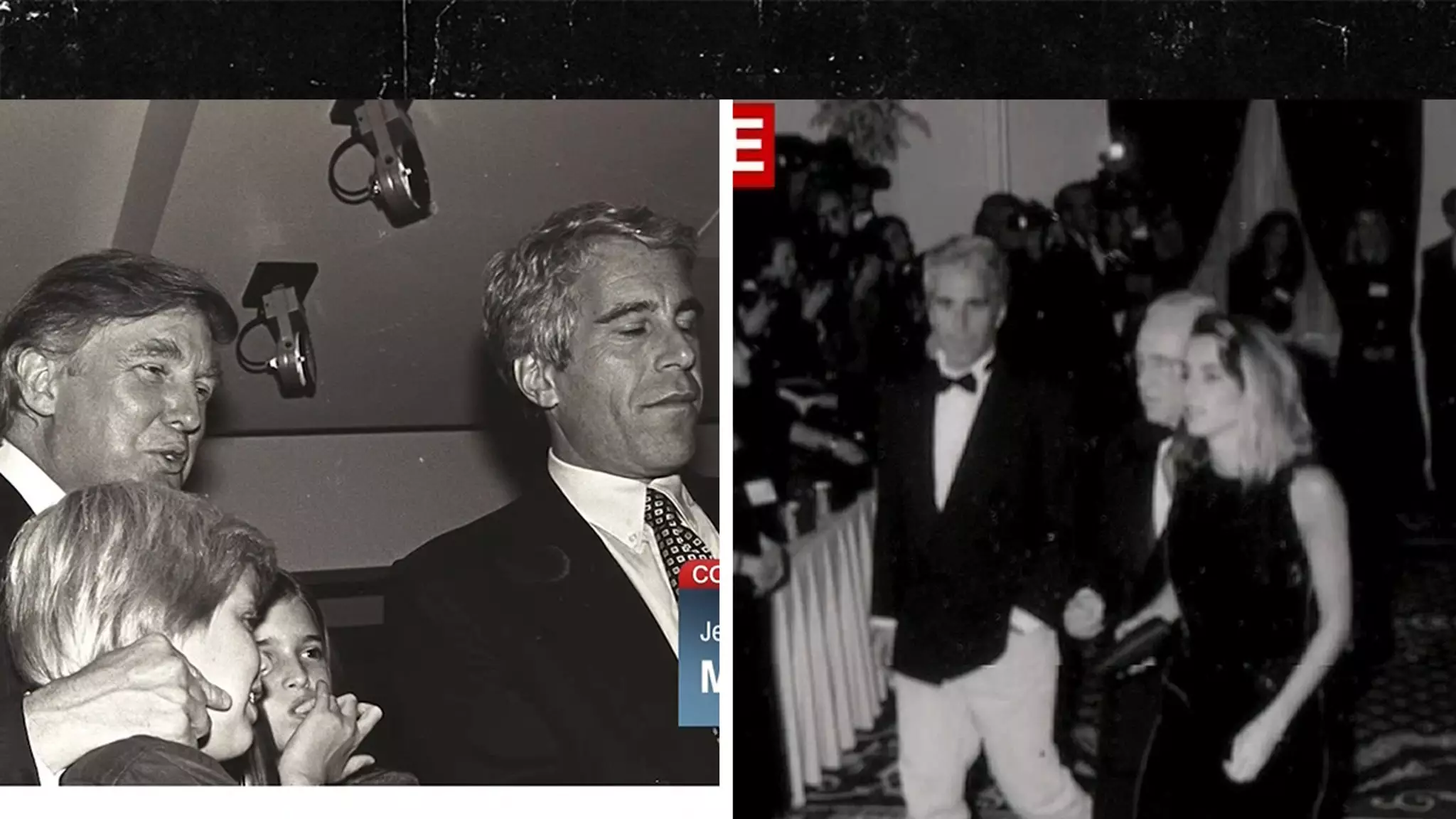Recent disclosures have forced a reexamination of Donald Trump’s past associations, especially with Jeffrey Epstein, a figure forever tainted by scandal and criminality. For years, Trump’s portrayal as a successful businessman and television personality overshadowed the murky waters of his early social circles. Newly surfaced photographs and videos challenge the sanitized narrative, exposing moments when Epstein, a man with a notorious reputation, was present at significant events in Trump’s life. These images—captured at the 1993 wedding of Trump and Marla Maples, as well as at a high-profile fashion show in 1999—reveal a casual familiarity that seems to contradict the official stance of distance and disapproval.
What is particularly striking is that Epstein did not just attend these events quietly. In some photographs, he appears amidst other celebrities and elites, with his presence seemingly unremarked upon at the time. These casual encounters highlight a complex social fabric where mutual acquaintanceship might suggest more than a superficial connection. Such sightings are critical in understanding how public figures like Trump navigated social circles that included problematic individuals, potentially normalizing or at least tolerating associations with people who later became symbols of depravity.
The Blurred Boundaries Between Friendship and Public Politics
Furthermore, videos depicting Trump and Epstein engaged in light-hearted conversation at a 1999 fashion show illustrate how intertwined they once were. They are seen laughing and sharing moments of camaraderie amid a bevy of high-profile personalities, including Melania Trump. The Victoria’s Secret event, celebrated for its glamour, becomes a backdrop that inadvertently exposes the extent to which these two figures crossed paths multiple times over years. These images pose uncomfortable questions about the nature of their relationship and whether what seems to be innocent banter historically held deeper implications that are yet to be fully understood.
Despite official denials from White House spokespeople, suggesting Epstein’s influence was limited to a brief association severed long before Epstein’s legal downfall, skepticism persists. Critics argue that dismissing these interactions as “innocuous” may be an oversimplification designed to shield powerful figures from scrutiny. After all, friendships among the elite often serve as a way to obscure uncomfortable truths, allowing reputations to be maintained while sinister details remain hidden in the shadows.
Historical Context and the Myth of Separation
It is important to contextualize these interactions within the broader landscape of U.S. social and political history. The fact that Trump’s name appears multiple times in Epstein’s files suggests a longstanding acquaintance, yet no direct legal link has been established that implicates him in any criminal wrongdoing. Many argue that it is vital to distinguish personal associations from active involvement in illegal activities. Still, appearances matter, especially when the individuals involved later face serious accusations or legal proceedings.
The controversy surrounding Epstein’s infamous crimes cannot be divorced from the social networks that facilitated his activities. If prominent figures like Trump shared even fleeting interactions with Epstein, questions about the nature of elite privilege and complicity inevitably surface. Whether these encounters were purely social or hint at deeper complicity remains a topic of debate, fueling conspiracy theories and skepticism about the transparency of those in power.
In this atmosphere of ongoing revelations, one thing is clear: acknowledging these past interactions compels a more honest reflection on the subtle ways in which power, status, and dubious associations intertwine. The scant details that have emerged so far demand critical scrutiny, and the public’s right to transparency should remain at the forefront amid the shadows cast by these once-hidden connections.

